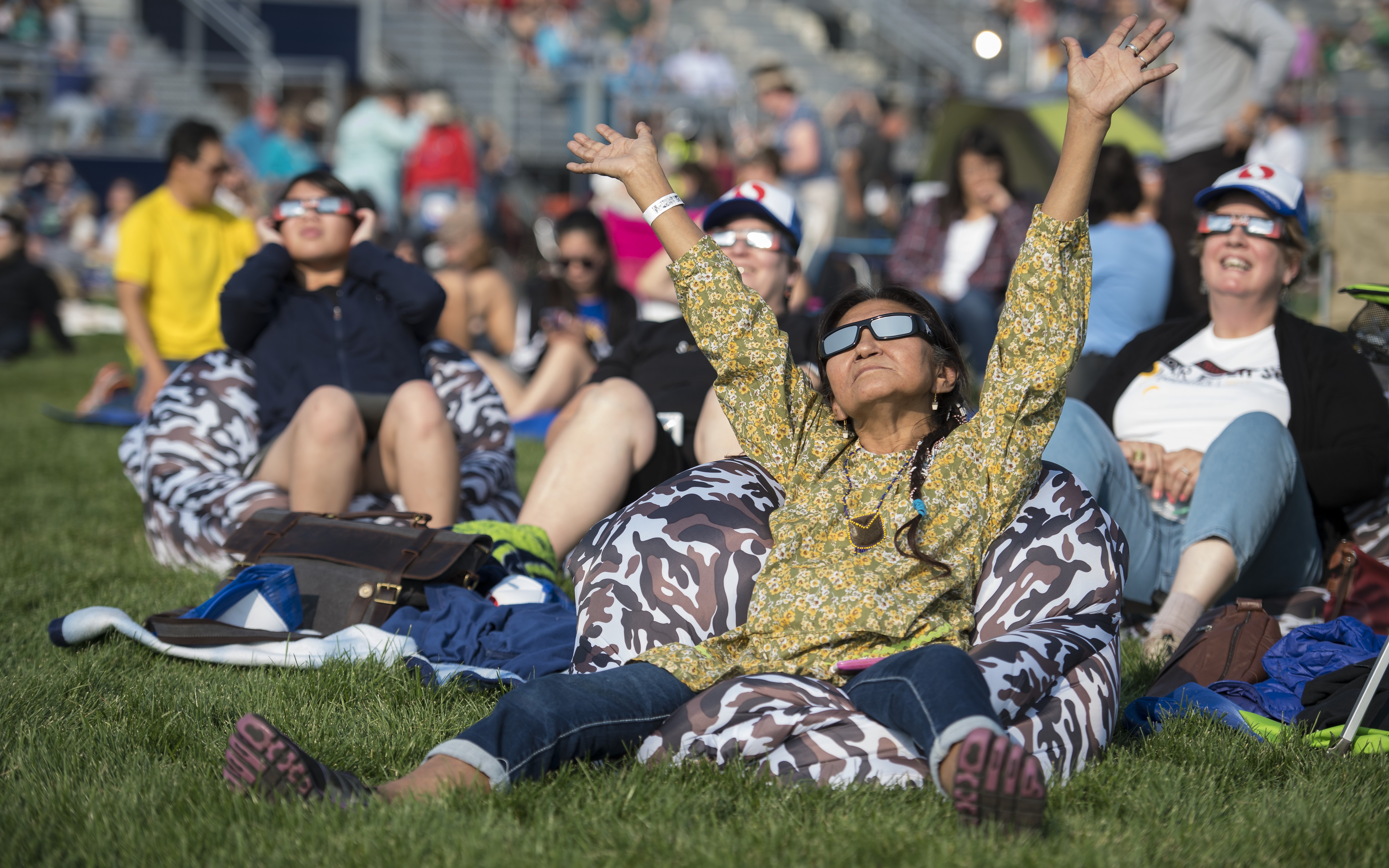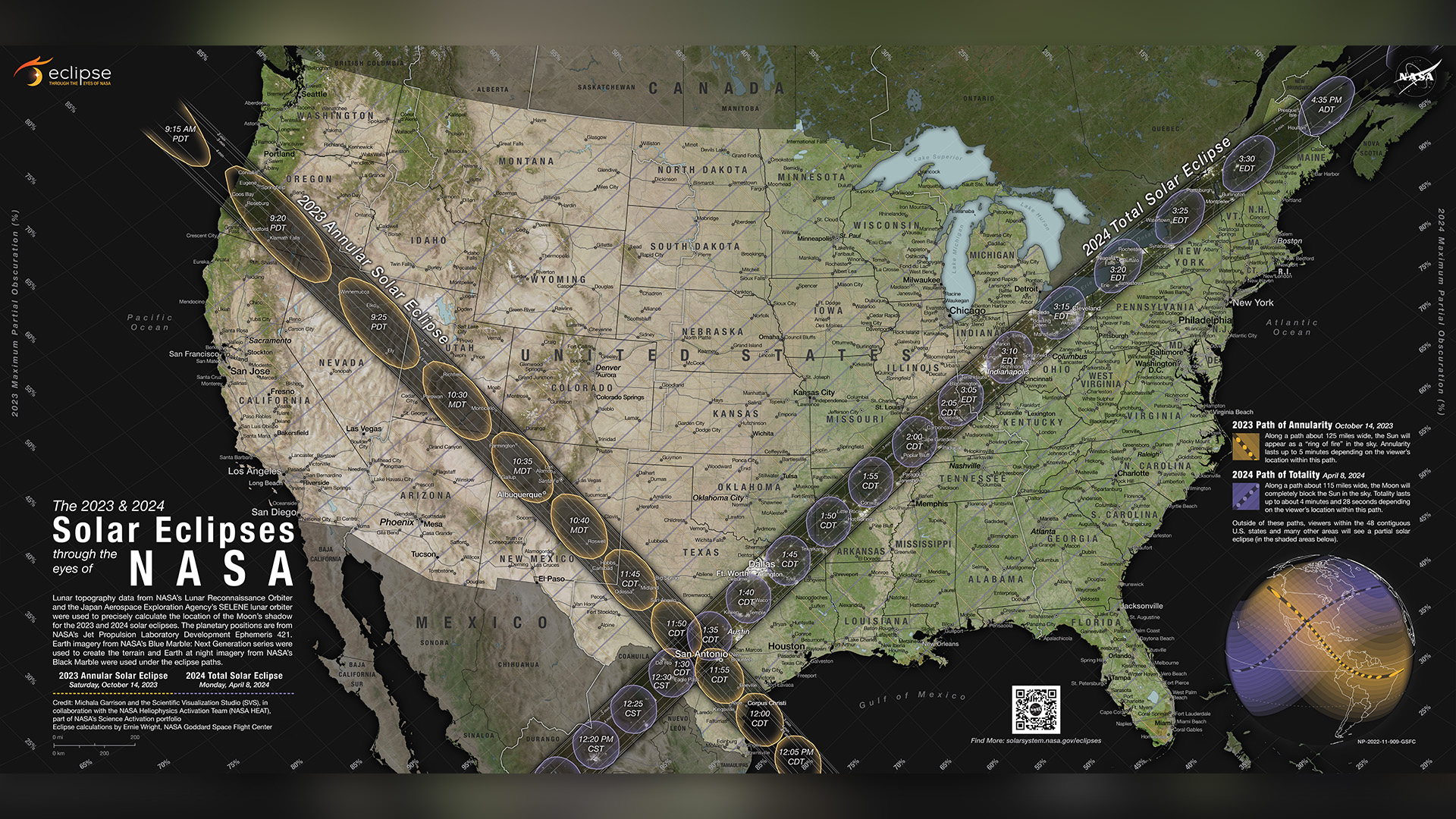
On April 8, a total solar eclipse will be visible across parts of the U.S., Mexico, and Canada for the first time since 2017 and for the last time until 2033, while a partial eclipse will be visible across almost the entire continent. With up to 100% of the sun's disk blocked by the moon depending on the viewer's location, this is a rare astronomical sight you won't want to miss — and one you definitely don't want to watch with your naked eyes.
Please note, there is only one safe time to look directly at the sun: During the brief moment of totality, when the moon entirely blocks the bright surface of our star.
To see totality, you MUST be within the 115-mile-wide (185 kilometers), 10,000-mile-long (16,000 km) path of totality, which crosses 15 U.S. states in a diagonal line from the southwest to the northeast. Totality will last between about 2-and-a-half to 4-and-a-half minutes, depending on the viewer's location.
Related: April 8 total solar eclipse: The best places to stargaze near the path of totality

Staring directly at the sun at any other time, even during a partial eclipse or in the moments just before or after totality, can cause permanent eye damage, including blindness. According to NASA, the only safe way to watch the partial phase of an eclipse is through a pair of approved solar eclipse glasses or by viewing the eclipse indirectly with the help of a pinhole camera, kitchen colander or a well-placed disco ball.
Where to buy approved solar eclipse glasses
If you want to go the eclipse-glasses route, now is the right time to order a pair before the April 8 event. The most important thing is to choose a pair that has been approved as safe by the American Astronomical Society (AAS), which tests and evaluates solar filters based on an international safety standard called ISO 12312-2.
You can view the AAS' list of approved eclipse glasses brands, including online vendors that resell those brands, on their official website, linked above. The list includes popular eclipse glasses manufacturers such as Lunt Solar Systems, American Paper Optics, Alpine Astronomical and many others that still have supplies in stock and offer express shipping.
You'll notice that the AAS doesn't share any links to Amazon, eBay or other online marketplaces. That's because, "in the weeks leading up to the August 2017 U.S. solar eclipse, such sites hosted numerous sellers of eclipse glasses and other solar viewers that had not been properly tested and shown to be safe," according to the AAS.
To avoid buying counterfeit or unsafe eclipse glasses when you're shopping through Amazon, make sure that the seller's name is identified on the site and that the same seller's name is one of the approved brands listed on the AAS page. A potential red flag to watch for is glasses marked as "NASA approved"; NASA does not approve any third-party products, so seeing this supposed selling point on an Amazon vendor's page can indicate the glasses are untested, according to the AAS.
If you'd prefer to buy a pair of approved eclipse glasses in person, the AAS recommends stopping by a Home Depot, Lowe's or Walmart to check if they have any in stock. (Some, but not all, locations sell ISO-approved eclipse glasses, according to the AAS.) Additionally, many libraries around the U.S. will be giving away free pairs of approved eclipse glasses; call your local branch or check this site for a map of participating libraries.
Can you reuse solar eclipse glasses?
If you bought approved solar eclipse glasses to view the partial solar eclipse in October 2023, then you can safely reuse them this April --- so long as the filters do not have any visible scratches, punctures, or tears, according to NASA.
One final, important note: Solar eclipse glasses are NOT the same as sunglasses. While sunglasses allow about 10% to 20% of daylight into your eyes, approved solar eclipse filters are typically 100,000 times darker, according to Live Science's sister site Space.com. Do not make the mistake of staring at the sun without the proper, safety-tested eyewear.
Editor's note: This article was updated on Feb. 13, 2024, to include new information regarding the April 8 total solar eclipse. A prior version of this article was written to address the October 2023 partial solar eclipse over North America.







